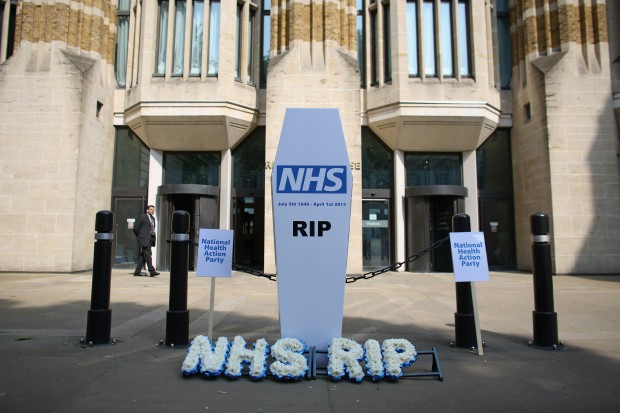Of all the accusations thrust at the Conservatives by Labour over the NHS in recent weeks, their weakest has been the attempt to blame the Government’s reforms to the NHS for the pressures it is facing.
Some will recall that we have been here before. In winter 2010, waiting times lengthened as the NHS was shaken by a serious flu outbreak. On that occasion, a shortage of critical care beds in the [pre-reform] NHS inherited from Labour meant that huge numbers of operations had to be cancelled. Though the problem was rapidly rectified, that did not stop Labour calling out a ‘crisis’ on the NHS, and blaming the reforms even before they had started.
Four years later – and with the uneventful winters of 2011, 2012 and 2013 in between – Labour has jumped on the (small) dip in A&E performance this time around to try to tell the same story. But they have made no effort to explain why the reforms would be to blame – and probably because they can’t. There is a question of timing, for example. Why would a set of reforms – largely focussed on making doctors responsible for long-term NHS planning – cause short-term problems in our A&Es two-and-a-half years after most of them were in place?
There is also a question of geography. In Labour-run Wales, the timeliness of NHS care remains stubbornly at around the worst in the country. Though just under 10 per cent of patients were not managed inside four hours in English A&Es in December, in Wales the figure was almost 20 per cent. If the reforms are to blame in England, then what is going on in Wales?
If anything, the reforms have probably helped. After a decade of productivity losses under Labour, the latest figures show productivity gains in the English NHS accumulating to over 5 per cent in the first two years of the Coalition. The Department of Health believes that is equivalent to £5.5 billion extra funding, per year.
And the truth is that this year’s pressures on the NHS – in both England and Wales – have been caused by something which nobody foresaw. Whenever winter turns to spring, the number of people needing hospital treatment falls. But in 2014, for the first time ever, that didn’t happen. The NHS has been keeping its head just above the water ever since.
No one seems able to explain why demand didn’t drop as it normally does. Some blame reductions in social care spending – but official statistics show that shortfalls in social services are causing no more problems for hospitals this year than they have before. Some point to the ageing population – but though that is happening, it did not start last spring. One of the more plausible explanations I have heard is that, because last year’s winter was so mild, more of the most vulnerable survived it than would normally have been the case. They now continue to need NHS care.
That is welcome news, but challenging for ministers to use as an excuse. Nor should they. Whatever the causes of this year’s pressures, the electorate have a reasonable expectation that the NHS will be able to deliver a high standard of timely care, now and in future years.
All parties agree that the ‘Five Year Forward View’ plan of NHS England chief Simon Stevens is the best way to deliver that. That includes Labour. And ironically so, given that the plan’s existence (and probably the recruitment of its author) were achieved only through the operational independence of the NHS guaranteed by the reforms which Labour oppose.
But the plan ultimately comes with a £8 billion annual price attached to it – and, in fairness to them, the Liberal Democrats are the only party to date both backing the plan publicly and putting their money where their mouth is. If Labour – and the Conservatives – are serious about overcoming the pressures seen in the NHS this winter, they would do well to do the same.
Bill Morgan is a Founding Partner of Incisive Health and a former SpAd at the Department of Health between 2010 and 2012






Comments